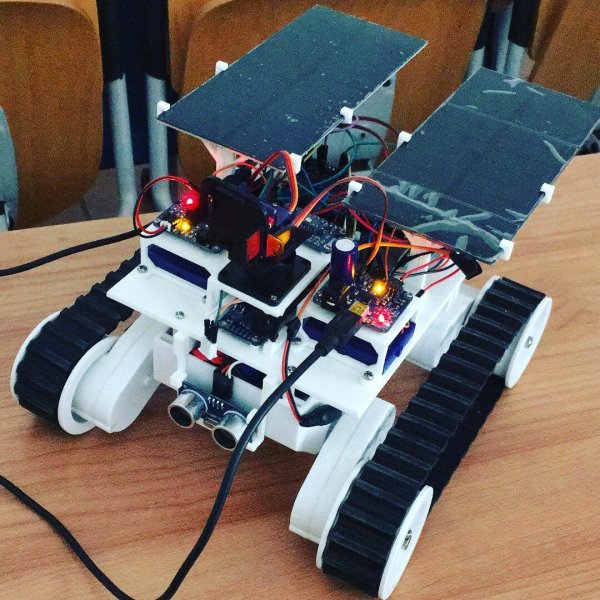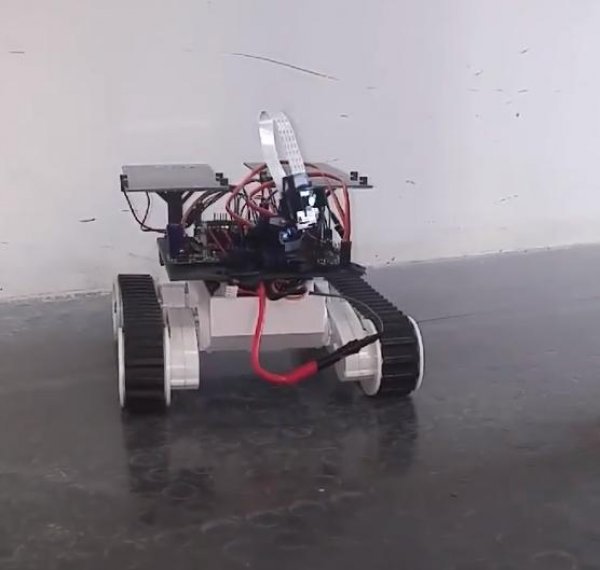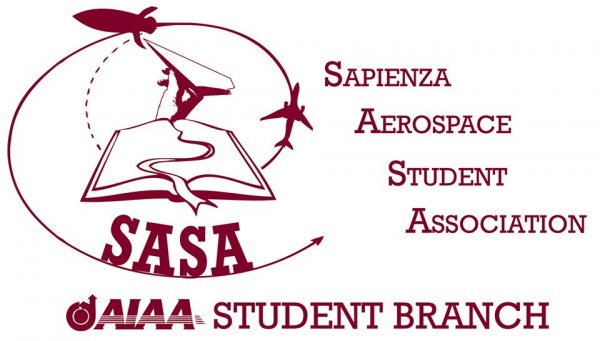Exhibitors 2018
- HOME AUTOMATION
- ROBOTICS
- YOUNG MAKERS (< 18)
- OPEN SOURCE
- 3D PRINTING
- DRONES
- EDUCATION
- FABRICATION
- HACKS
- NEW MANUFACTURING
- SCIENCE
- ENERGY & SUSTAINABILITY
- ART
- INTERNET OF THINGS
- MUSIC & SOUND
- RECYCLING & UPCYCLING
- KIDS & EDUCATION
- ARTISANS & NEW CRAFT
- CULTURAL HERITAGE
- GAMES
- WELLNESS & HEALTHCARE
- FASHION & WEARABLES
- FOOD & AGRICULTURE
- BIOLOGY
- 3D SCANNING
- AEROSPACE
- STEAM PUNK
- ARTIFICIAL INTELLIGENCE
- ARDUINO
- CROWDFUNDING
Sapienza Technology Team
The project consists in the simulation of a ROVER, a self-propelled land probe, inspired to the ones launched by several space agencies on other celestial bodies, in particular on Mars. What it’s been built is an exploration rover which has the capability to move around autonomously, achieve a series of fixed objectives and conduct specific functions, depending on what it is commanded to do.
SSRP is programmed to move both independently and remotely from ground station (namely a computer). It knows how to recognize obstacles in front and behind it, continuously sending data, received from a few sensors, to the controller. Moreover, the expected outcomes are that the rover should recharge itself by means of two solar panels and that, if requested, pictures and video should be taken using the camera mounted on it.
To achieve these objectives, it was decided to divide the project into three macro-areas: mechanical, electrical and software design. Mechanical-wise, the starting point was a prefab track-laying stage on which the electromechanical structure was mounted on; the latter entirely designed and 3D printed by the members.
Software-wise, the rover was managed by a single-board-computer Raspberry Pi3 (essentially a computer with Linus OS), accessible by connecting it and the ground station on the same Wi-Fi connection.
The most important sensors mounted on the rover are:
• Distance sensors: two in total, one in front, one behind. They constantly transmit the registered distance via ultrasound signals. Through a dedicated function, if the rover is moving and the distance between it and an object decreases below a minimum value, it is able to stop and change path;
• IMU (Inertial Measurement Unit, it’s a complex of sensors, namely an accelerometer, a compass, a gyroscope and a temperature sensor). It allows the rover to be aware of its positioning and orientation and of the direction it is moving towards;
• The pan-tilt and the servo-driver are the set of structure and control which support and direct the camera in every direction. It can be directed above, below, left and right, through the setting of two servomotors, with a 180° span on both directions.
• Camera (12MP) can capture images and videos (limited fps) and send it to the grond station in real time
SSRP is programmed to move both independently and remotely from ground station (namely a computer). It knows how to recognize obstacles in front and behind it, continuously sending data, received from a few sensors, to the controller. Moreover, the expected outcomes are that the rover should recharge itself by means of two solar panels and that, if requested, pictures and video should be taken using the camera mounted on it.
To achieve these objectives, it was decided to divide the project into three macro-areas: mechanical, electrical and software design. Mechanical-wise, the starting point was a prefab track-laying stage on which the electromechanical structure was mounted on; the latter entirely designed and 3D printed by the members.
Software-wise, the rover was managed by a single-board-computer Raspberry Pi3 (essentially a computer with Linus OS), accessible by connecting it and the ground station on the same Wi-Fi connection.
The most important sensors mounted on the rover are:
• Distance sensors: two in total, one in front, one behind. They constantly transmit the registered distance via ultrasound signals. Through a dedicated function, if the rover is moving and the distance between it and an object decreases below a minimum value, it is able to stop and change path;
• IMU (Inertial Measurement Unit, it’s a complex of sensors, namely an accelerometer, a compass, a gyroscope and a temperature sensor). It allows the rover to be aware of its positioning and orientation and of the direction it is moving towards;
• The pan-tilt and the servo-driver are the set of structure and control which support and direct the camera in every direction. It can be directed above, below, left and right, through the setting of two servomotors, with a 180° span on both directions.
• Camera (12MP) can capture images and videos (limited fps) and send it to the grond station in real time
Italy
SASA - Sapienza Technology Team
“SASA-Sapienza Aerospace Student Association” is a local student branch of “AIAA-American Institute of Aeronautics and Astronautics”, composed by student from the University of Rome “La Sapienza” and created by the Didactic Council of Aerospace Engineering.
On the basis of its chart, SASA is a non-profit culture association, managed and run by students in order to involve its associates in an atmosphere in which everyone’s ideas can grow and spread, full of different realities, providing the opportunity to improve as professional figure as a person with an hands-on attitude.
Our associates can join a Project-Team in order to partecipate to international engineering competition; in this way they can approach a real engineering designing and construction experience with particular attention to the various phases of the progect (ideation, design, construction, testing, analysis pre/post mission, writing of reports,…).
Through SASA, students will have the opportunity to learn technical and management skills (electronics, software development, mechanics, aerodinamics, signal theory, human resources, leadership, teamwork, organization, bookkeping, business management, etc.) in a practical and hands-on approach.
In this way SASA wants to partecipate to the didactical process, granting a correct acquisition of knowledge and skills, in order to let improve the efficency of the State-system, by introducing professionists with both technical and executive skills.
On the basis of its chart, SASA is a non-profit culture association, managed and run by students in order to involve its associates in an atmosphere in which everyone’s ideas can grow and spread, full of different realities, providing the opportunity to improve as professional figure as a person with an hands-on attitude.
Our associates can join a Project-Team in order to partecipate to international engineering competition; in this way they can approach a real engineering designing and construction experience with particular attention to the various phases of the progect (ideation, design, construction, testing, analysis pre/post mission, writing of reports,…).
Through SASA, students will have the opportunity to learn technical and management skills (electronics, software development, mechanics, aerodinamics, signal theory, human resources, leadership, teamwork, organization, bookkeping, business management, etc.) in a practical and hands-on approach.
In this way SASA wants to partecipate to the didactical process, granting a correct acquisition of knowledge and skills, in order to let improve the efficency of the State-system, by introducing professionists with both technical and executive skills.
D1 (pav. 7)






















































































